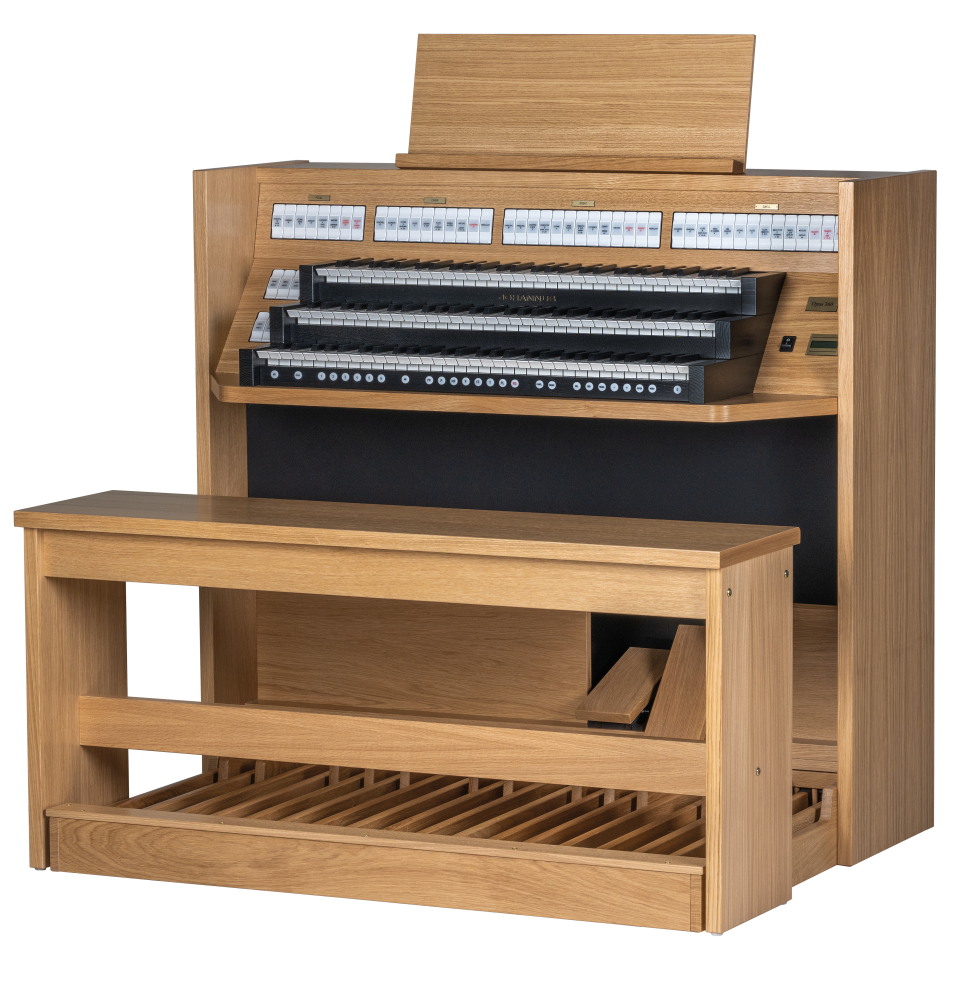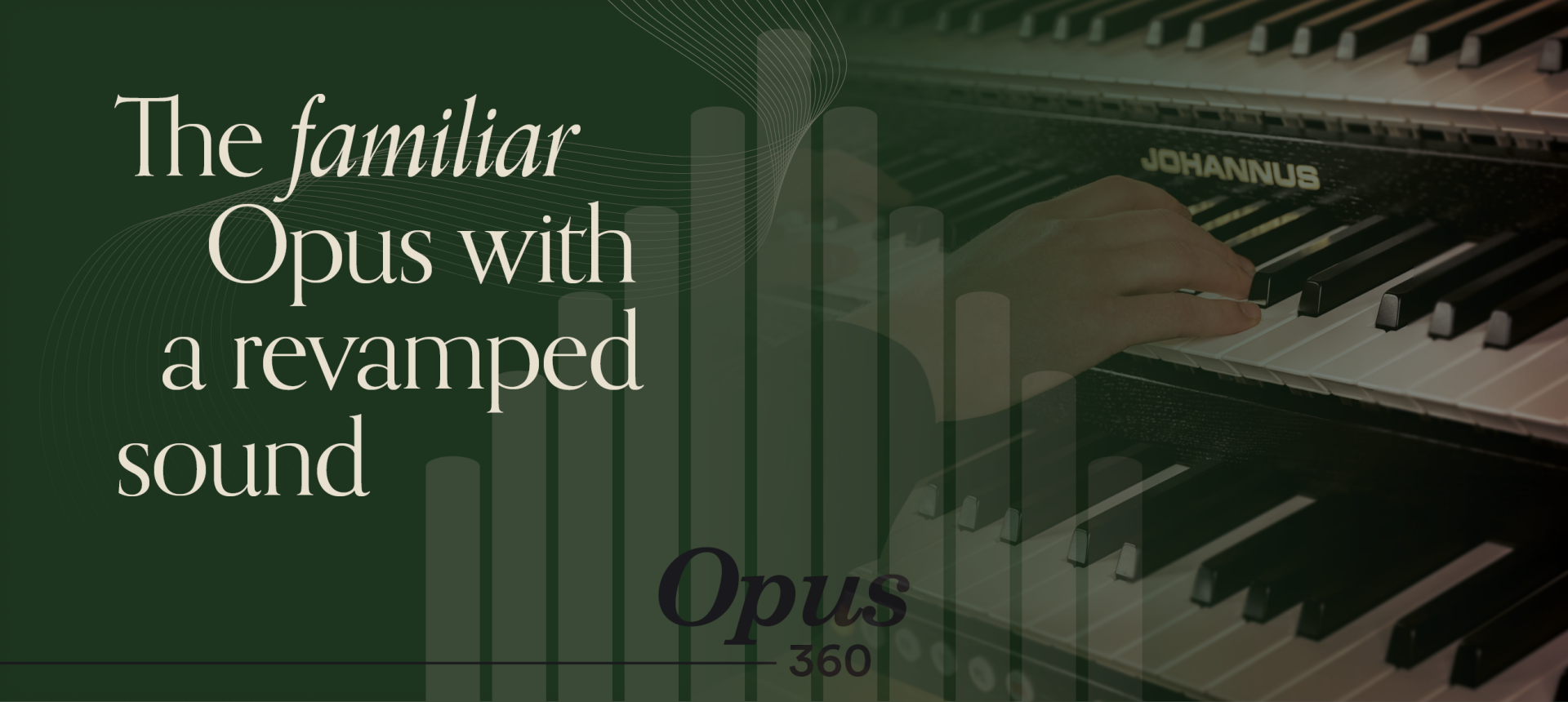OPUS
360
From € 10.995,-
A masterful organ for every organist
With its three manuals, 43 stops and powerful 4.1 audio system, the Opus 360 is a comprehensive organ. The style-variable disposition, with samples from recordings of famous pipe organ from churches in Kampen, Amsterdam, Raalte, Paris and Dresden, ensures that every stop can be brought to life in the right style. The convolution reverb adds to the intense sound experience and makes this organ a great choice for any demanding organist.

Highlights

Overview
- System OranjeCore+™
- Manuals 3
- Voices 43
- Solo stops 2
- Couplers 6
Console
- Dimensions
- Height (excluding music desk) 121 cm
- Height (including music desk) 145 cm
- Width 131 cm
- Depth (excluding pedal board) 68 cm
Audio
- Audio system 4.1
- Audio control DEA2.0™
- Reverb System
- Convolution reverb, 12 unique reverbs •
- Output amplifiers
Functions
- Controllable functions
- 0 (recall / cancel) •
- MB (Manual Bass) •
- Menu (Johannus Menu) •
- RO (Reeds Off) •
Great
- Principal 16'
- Principal 8'
- Stopped Flute 8'
- Quintaton | FL. Harm. (S) 8' | 8'
- Octave 4'
- Open Flute 4'
- Twelfth | Gamba (S) 2 2/3' | 8'
- Fifteenth 2'
- Cornet | Terzian (H)
- Mixture
- Trumpet 16'
- Trumpet 8'
- Tremulant
- Choir - Great
- Swell - Great
Swell
- Bourdon 16'
- Principal 8'
- Flute | Rohr Flute (B-H) 8' | 8'
- Viola di Gamba 8'
- Vox Celeste 8'
- Octave 4'
- Flute 4'
- Flute Twelfth 2 2/3'
- Wald Flute | Fifteenth (B) 2' | 2'
- Tierce | Sifflute (B-H) 1 3/5' | 1'
- Mixture | Carillon (H)
- Fagotto 16'
- Trumpet | Oboe (S-B) 8'
- Vox Humana 8'
- Tremulant
Choir
- Principal 8'
- Bourdon 8'
- Octave | Salicional (S) 4' | 8'
- Flute 4'
- Nazard 2 2/3'
- Flute | Fifteenth (B) 2' | 2'
- Sesquialtera
- Mixture | Larigot (S) - | 1 1/3'
- Cromorne 8'
- Tremulant
- Swell - Choir
Pedal
- Principal | Flute (S) 16' | 16'
- Subbass 16'
- Octavebass 8'
- Gedackt 8'
- Choralbass | Flute 4' | 4'
- Mixture | Quintbass (S-H)
- Contra Trumpet 16'
- Trumpet | Clarion (S) 8' | 4'
- Choir - Pedal
- Great - Pedal
- Swell - Pedal















